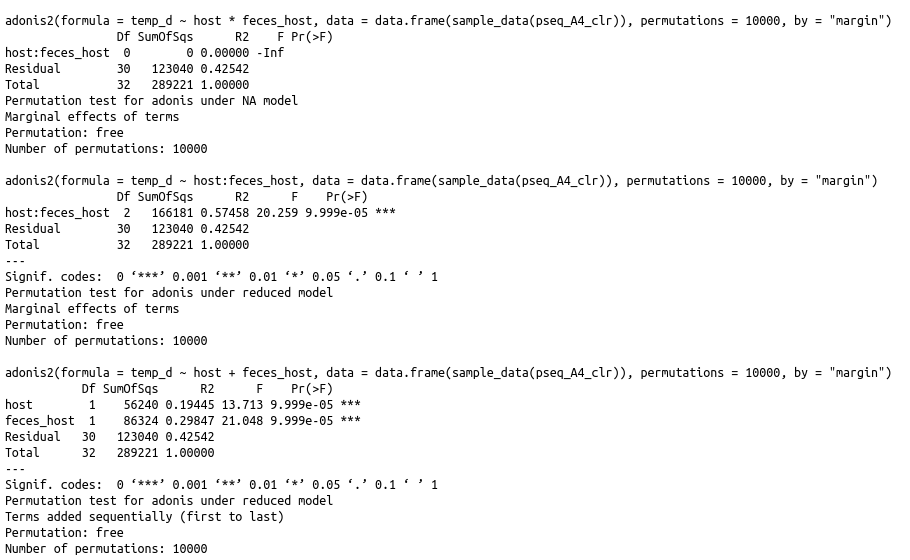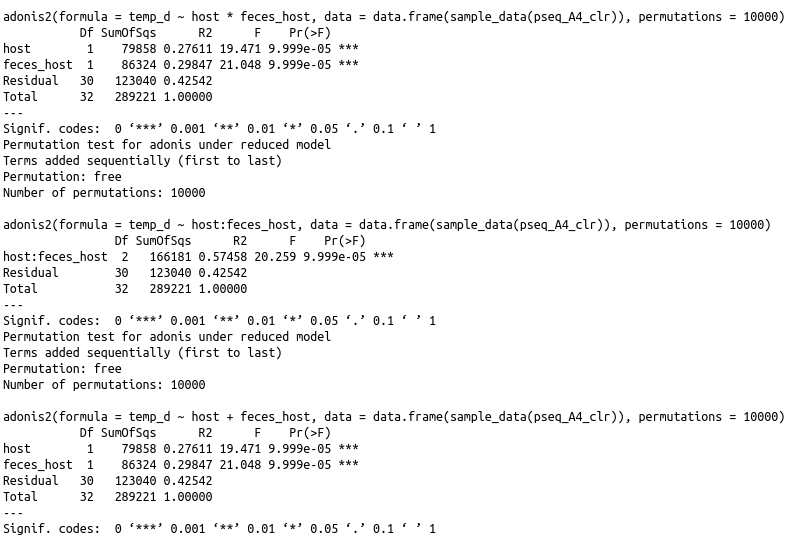There are two separate issues here: (1) the meaning of term marginal test, and (2) redundancy of the interaction term.
Marginal tests study the effect of the term when it is removed from the model containing all other terms. In interaction model ~ host + feces_host + host:feces_host the only term that can be removed from the model is host:feces_host. Terms host and feces_host are both included in host:feces_host and hence they cannot be removed. For this reason only the interaction term is studied with by = "margin". See ?drop.scope in base R for further discussion.
The second issue is that the interaction term is redundant. In the first (by = "margin") example you see that when you analyse its effects in a model containing ~host + feces_host, nothing happens: term host:feces_host does not change the model in anyway: The change in degrees of freedom (Df) is 0, the change in sum of squares (SumOfSqs) is 0. F = −∞ just appears as a result of the calculations that we do with zeros – we have no special treatment of Df=0, SS=0 cases. The interaction term has nil effect and therefore you get these anomalies: Only two of host, feces_host and host:feces_host has any effect in your model, and only two will appear in the output. Which two, varies among models. However, they all define the same model, as you see in the Residual and Total rows which are identical in all models.
It seems that both of your terms have 1 degree of freedom. This implies that they have only two levels (two types of hosts and feces_host). Was this your intention or have you forgot to cast these variables to multilevel factors?
Hello,
I have a Aitchison distance matrix (CLR Transformation+Euclidean distance), called temp_d, derived from 16S based data. I have various groups, and I wanted to analyze their variables with a PERMANOVA for feces transplant. The variables shown are host(species from which the samples were obtained), and feces_host (species form which the input feces came from). I have try both default, by term, and by margin, but I need help to understand the results.
When using by margin:
When using including interactions(*) in the model formula, only the interaction term appears and F statistic=-Inf (I don't understand the meaning of this -Inf for the F statistic), but not the individual terms. However when I do it using only interactions(:), or only terms(+), it works, but not when terms and interactions are both included in the model.
When using the default:
When using including interactions(*) in the model formula, only the terms appear, but not the interaction term, being the result identical to use only (+). However when I do it using only interactions(:), or only terms(+), it works, but not when terms and interactions are both included in the model.
Thanks in advance for any help!